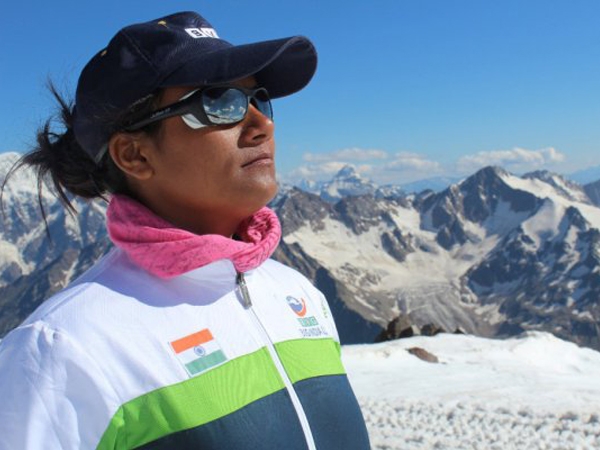When Amish Tripathi set out to publish his first book, The Immortals of Meluha, he knew that getting a publisher would be a Herculean task. With a story based on an offbeat idea that all Gods were once human beings and it was their deeds in the human life that ultimately made them famous as Gods, it was not going to be easy to get published.
“I approached around 20 publishers with my story and most of them told me that my topic is too boring. ‘Youngsters are no longer interested in reading about religion’, was the top argument,” shares Amish.
“Since I had no takers I decided to go down the self publishing routine.” Amish used the Internet to his advantage, making one chapter of the book available for free download to entice readers along with releasing a live video, on YouTube, about the book. Cut to five years later and Amish’s Shiva Trilogy is one of India’s fastest-selling books with 2.5 million copies in print and over Rs.60 crore in sales. “The high online response eventually led to me picking a publisher and putting physical copies of my book in stores,” he says.
This cost-effective and easy route to publishing is now finding many takers in India. Self-publishing lets you tell your story, market it the way you want to and earn 70 per cent royalty, which when compared to traditional publishing – a 7.5 to 15 per cent for newbie writers – is huge.
There are, of course, perks of choosing the traditional route. Working with a publisher means that all your post production and marketing plans are taken care of, unlike in the case of self-published authors . “The ultimate freedom that you get when you self-publish cannot be compared with anything else,” says Amish. A traditional publishing house takes care of editing your book, which could often mean that an overzealous copy editor could end up changing the way your story flows and there is little you can do about it.
While freedom to present the book the way you want is one advantage, the other is the fact that you are at the helm of the book. From marketing campaigns to interacting with fans, you are the sole point of contact. While some may call it overwhelming, for many it enhances their journey as an author.
Author Rasana Atreya, who quit her nine-to-five job to self-publish her first novel shares, “Self-publishing my book forced me to learn so much about the publishing field. As a writer, I have been able to interact with my fans from as far as Mexico, Uruguay, the UK and the US.”
Rasana’s self-published book, Tell a Thousand Lies was shortlisted for the Tibor Jones South Asia Prize and was downloaded almost 17,000 times.
But isn’t self-published used as a last resort by many authors? Rasana disagrees. “Post Tell a Thousand Lies, I was offered a trade publishing contract. I decided to decline the publishing contract and self-publish. A lot of traditionally published writers are also taking back rights for their underperforming books, trying to figure out why their books didn’t sell, fixing those issues (getting the book re-edited, commissioning a better cover and so on). Then they’re self-publishing these repackaged books,” she says driving forth the point that today self-publishing is more about being in charge of your own book than anything else.
Also the fact that self-publishing is so easy, as compared to the traditional route where it may be years before your manuscript is even read by a publisher, works in its favour. When six-year-old Aamani Gurajada was bored on a train journey, she jotted down seven short stories, which she later published as an e-book, with the help of her mother, Rasana. In fact, The Mosquito and The Teapot got such rave reviews that some publishers took the story and a print version of the book was unveiled in2014.
So how does this work? Pretty simple actually.
Opting for an international firm, like Partridge India (a part of Penguin) or Amazon (Kindle Digital Publishing) lets you put up your book on a global shelf. Their e-book publishing format allows you to publish limited copies of books and you can also choose to take up various add-on services like editing, book cover illustration, etc. as part of the overall package. You can opt to publish a paperback or hardcover book, if required. Your e-book becomes available to the reader in as little as 72 hours or two months (in case of a physical book).
The plans also include an introduction to marketing your book with adequate support to set up your own website and social medial channels along with book trailer videos. The point is to use the Internet to your advantage and put yourself out there as the face behind your book. It is a great strategy for a first-time author, who is willing to push traditional boundaries, to make the book work.
Also traditional publishing doesn’t always guarantee a marketing strategy. They often dedicate the marketing budget to a number of authors, who they feel will do well and let your book work on its own. In which case you have to anyway step in and make it work.
The only benefit that comes with traditional publishing is the reputation. The fact that a big publishing house was willing to put its money on your book speaks for itself as compared to self-publishing, where anyone can become a publisher. But with e- books slowly breaking the traditional barriers, Rasana is emphatic while saying, “It does not matter how you are published; readers don’t look at the publisher before picking up or downloading a book. They look at the content. If you have a story, which resonates with your readers, then that’s what they want. Other authors and trade publishers would probably care how you were published, but your readers simply don’t.”



